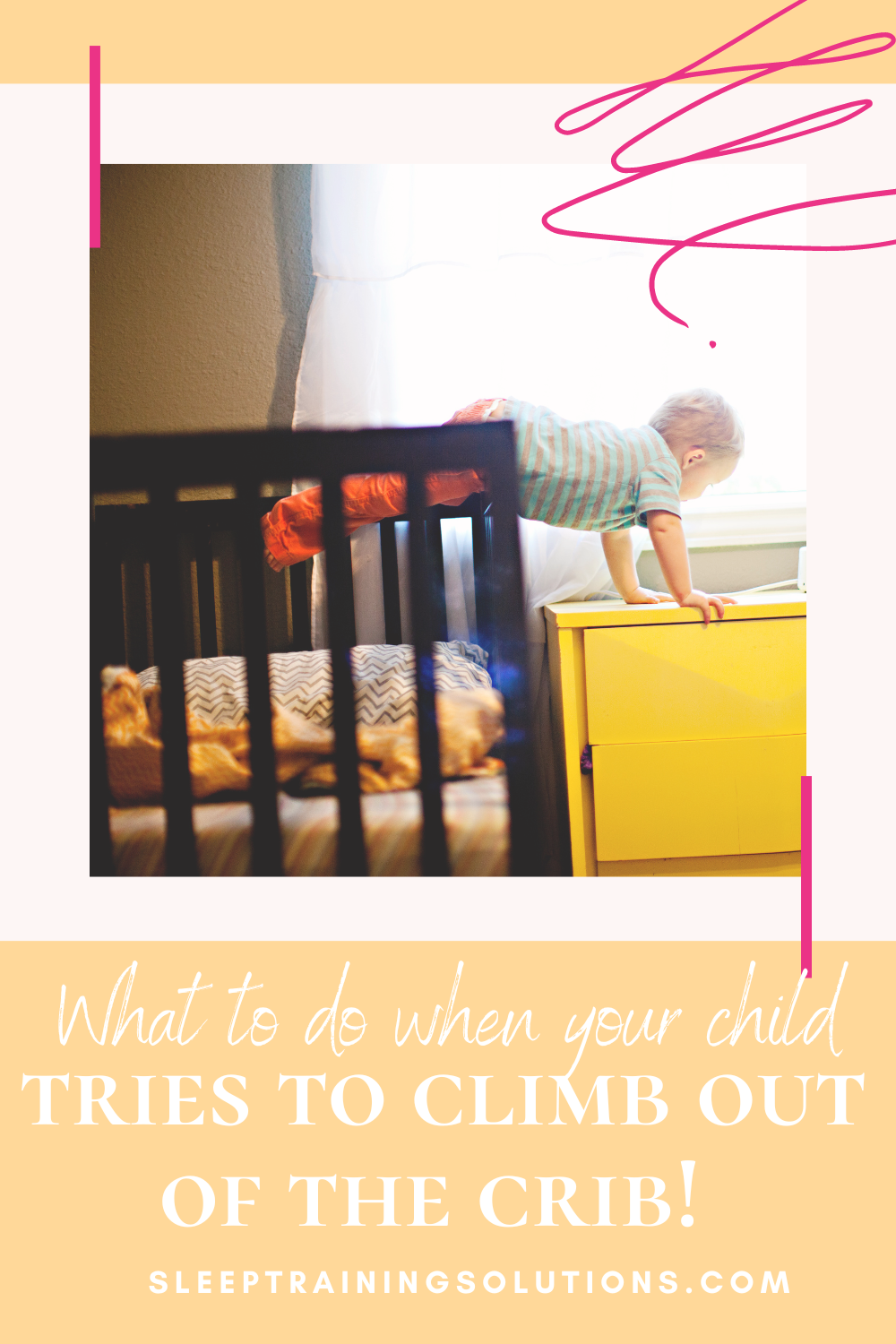What to do when your child tries to climb out of the crib
Child climbing out of crib?
Is your child starting to figure out that she can climb out of the crib? If your child is under 3 years, it’s best to try and keep them in the crib and not transition to a bed because they’re developmentally not ready to do so. Here are 8 tips to help keep your child in the crib as long as possible:
Lower the crib mattress
We want to maximize the space in between the top of the mattress and the crib rail, so make sure the mattress is on the lowest setting.
Take everything out of the crib
Remove any pillows (if you had one for your child who was 2 years or older) and stuffed animals that your child could use as a step to get just a little higher to make scaling the crib side doable!
Minimize the number of low sides
If your crib has one side that is higher than the rest (usually those that convert into a full bed will have one taller side that will be a headboard), flip that around 180° so the tallest side is opposite the wall, not against it. If you can, push the crib into a corner so then only one short side is facing out to minimize the area that is easy to climb out!
Use strategic PJs
To make it harder to lift a leg up, use a regular sleep sack or sleep sack with foot openings. If your child is smart enough to take it off, you can turn the sleep sack around so the zipper is in the back. There are also special pajamas will a cloth piece sewn in between the legs to, again, make it harder to lift the leg up and over the crib rail.
Clear a radius around the crib
Look at the picture at the top of this post. See how the dresser is right next to the crib and the child is using that to climb out? We don’t want any pieces of furniture or other potentially hazardous items within three feet of the crib so do a safety sweep of the surrounding area around the crib.
Make sure the room is safe
If your child is close to being able to climb out of the crib, it’s so important to make sure the bedroom is completely childproofed. Attach all tall furniture with anti-tip brackets, move any cords out of reach or hide them, use outlet covers, make sure any first aid/personal care items (like diaper cream, nail scissors, lotion, etc) are removed from the room, etc. You’ll also want to consider a childproof handle on the door knob so your little one can’t go roaming in the middle of the night! Also look at what’s on the other side of the door - stairs, the bathroom, etc - that will need to be childproofed as well!
Clear the room of “fun”
If your child is looking around the room and sees that favorite toy she played with right before bedtime or something else exciting sitting just outside reach, she’s more likely to try and climb out to get it! You can temporarily move all the books and toys out of the bedroom (into the closet or into another room like a playroom).
Use a travel crib
If you’ve traveled with a travel crib and your child slept comfortably, you might consider trying a travel crib at home (at least until the excitement of climbing wears off). Travel cribs with mesh sides are much harder to climb out of than most cribs. I especially like the travel cribs like this one with sloping sides to make it even harder!
The bottom line is that you want your child to be safe, so try these tips but also remember to make sure your child hears repeatedly to lay down with eyes closed under the clock says it’s morning. Using my favorite toddler clock makes it easy to set colors for bedtime and wake time (you can use red because most older toddlers will understand read means stop from traffic lights, but also rhymes with bed - and green means go and they can wake up).
The most important thing NEVER to say?
“Don’t climb out!” is the single worst thing you can say to a curious toddler.
Oftentimes they weren’t really thinking about that as a possibility but now it’s been said out loud (and of course, children have selective hearing!) so he likely just heard “climb out”.
That’s just a good parenting rule of thumb - when you want your child to do something - say what you expect them to do, NOT what you DON’T want them to do!
Toddler climbing out of crib solutions
Related Posts:
Sleep Training Solutions is a participant in the Amazon Services LLC Associates Program, an affiliate advertising program designed to provide a means for sites to earn advertising fees by advertising and linking to Amazon.com and affiliated websites.
This post is for informational purposes only and may not be the best fit for you, your child and/or your personal situation. It shall not be construed as medical advice. The information and education provided here is not intended or implied to supplement or replace professional medical treatment, advice, and/or diagnosis. Always check with your child’s physician or medical professional before trying or implementing any information read here.





